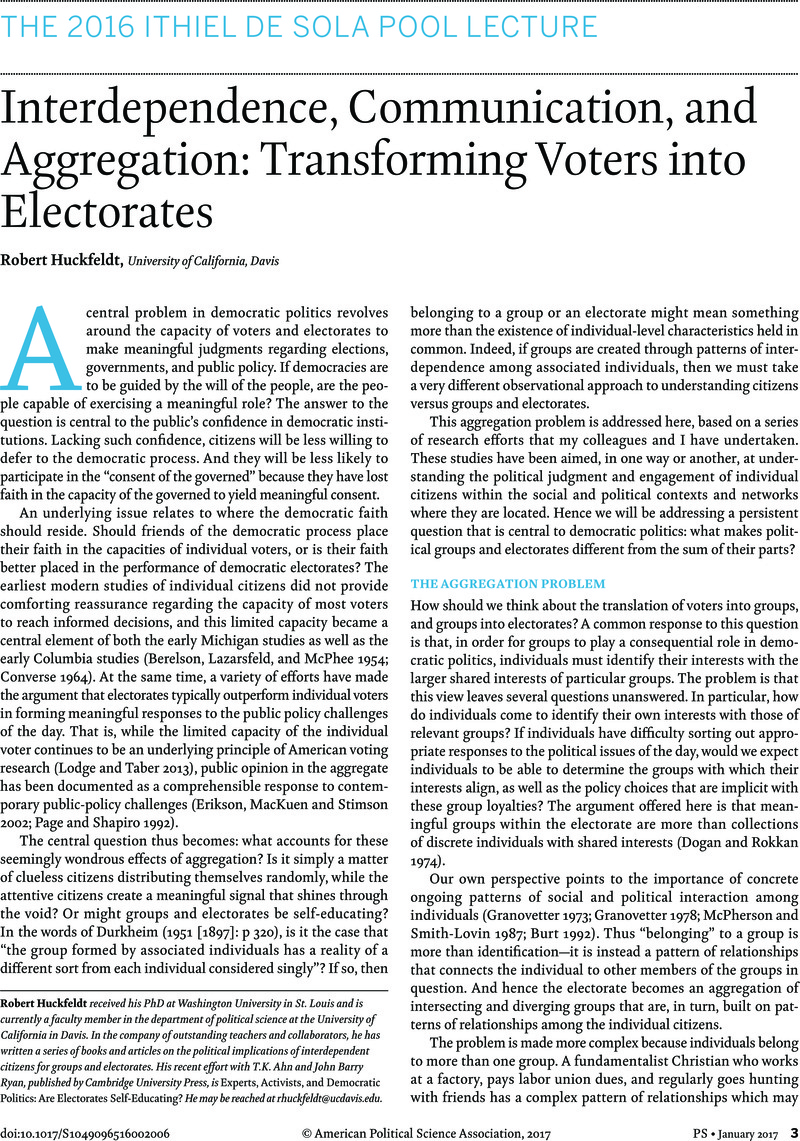Pietryka, Matthew T.,
Reilly, Jack,
Maliniak, Daniel M.,
Miller, Patrick,
Huckfeldt, Robert, and
Rapoport, Ronald.
2016. “From Respondents to Networks: Bridging between Individuals, Discussants, and the Networks in the Study of Political Discussion.” Working Paper.
CrossRefGoogle Scholar 